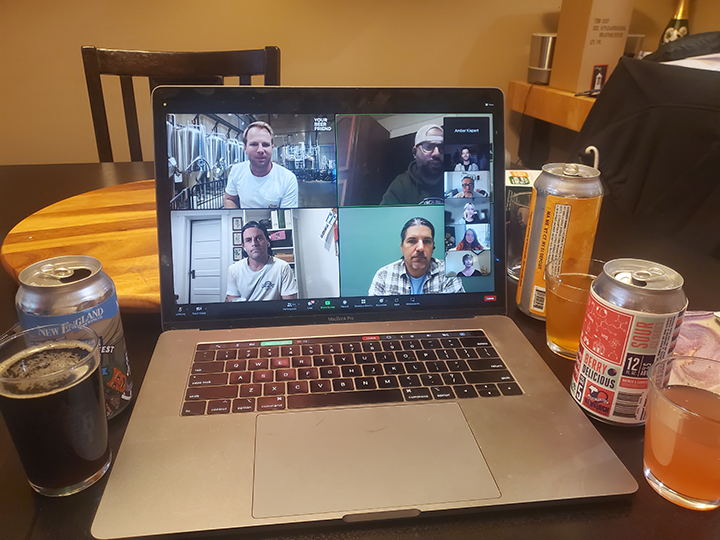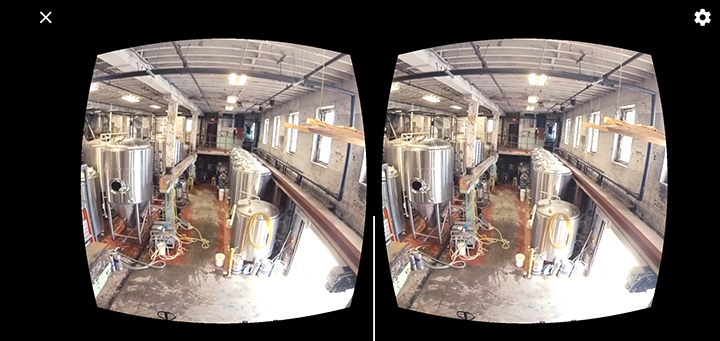Editor's note: This is Part 4 in our State of the Industry report. To view Part 1 (where we look at some recent survey results and the 2022 wedding boom) click here; to view Part 2 (corporate catering) click here; to view part 3 (supply chain and staffing shortages) click here.
A tech revolution
Technology continues to become increasingly important post-pandemic; everything from robotics to virtual tastings, to even TikTok are having a moment in the catering industry.
Robotics
From cocktail-making to burger-flipping, many food and beverage businesses are beginning to discover the benefits of using robots to improve their productivity. According to Fast Casual, they can automate the food or beverage-making process, save money and human resources, enrich menus, make fewer mistakes, and reduce food waste.
According to GlobalData’s latest report Robotics in Travel and Tourism, the service robotics industry is set to register a compound annual growth rate (CAGR) of 21.5% to reach $216 billion in 2030, driven by investments across consumer facing industries. The overall robotics industry is set to grow from $70 billion in 2022 to $568 billion in 2030, says GlobalData, a leading data and analytics company.
TikTok
For a lot of the events industry, social media (Instagram, Facebook, etc.) serves as a great marketing tool: it helps get your name out there and showcases the great work you have been turning out. TikTok, however, has made a vastly different impact on the catering and hospitality world.
While TikTok can certainly be used for marketing and promotion purposes, it’s also made a major play in the foodservice world by helping trends gain popularity. One great example of this is the butter board revolution that has swept events in recent months as more and more catering clients are asking for them as part of their cocktail hours or salad courses.
Virtual reality
Virtual (or augmented) reality technology has made great strides over the past several years as a way to give guests and potential clients alike a more immersive experience.
One example is Meet Virtually, where participants can log into a pre-organized “event” through their smart phones, which are then placed into a simple cardboard VR viewer where they can tour a venue from the comfort of their own home. For those caterers who own and operate their own venues, this offers a great solution to help alleviate the pressure and time commitments of venue tours in the current event boom environment.

Meet Virtually held a virtual Okotberfest beer tasting earlier this fall. Photo courtesy Catersource Staff

Meet Virtually's VR Tours is a first of its kind platform to host group virtual tours. Participants receive vr goggles, which work in consort with a smart phone for the tour. Photo courtesy Catersource staff
Another emerging trend in the realm of VR is immersive experiences at events where cartoon garnishes can interact with a cocktail or entrée with the simple scan of a QR code.
Apps
There’s also a number of apps available that can assist with seating maps, menu creation, and ordering.
“I can speak for the US Foods app that most of our clients use and rave about,” says Elkins. “The ease of being able to order from your phone and track your products so you know when to have your staff come in has been a huge help.”
Survival through sustainability
Over the past couple years, sustainability has become the topic of conversation amongst catering and events professionals; everything from sustainability in staffing, sustainability in the kitchen, and sustainability at events.
Amongst caterers, sustainability in the kitchen and at events has had the most attention put on it.
“Not to get controversial but as a mother we need to be looking out for our planet and implementing greener practices,” Selden says. “We are very focused on being more sustainable and try to educate our team in these practices and the importance of them. Our clients really appreciate it!”

Caterers are putting a stronger emphasis on sustainability thruogh the use of Eco-friendly disposable tableware products, such as Dried palm leaf or betel nut.
There are myriad ways that caterers are incorporating sustainability practices into their businesses. A few examples are: using eco-friendly cleaning products; eliminating plastics from disposables; buying sustainably and supporting local small businesses and farmers; opting for paperless documents (and if you must print use recycled paper); installing a water station in kitchens and venues to cut down on plastic water bottle use; using compostable materials; and partnering with local food recycling companies for waste collection following an event.
“Not everything about sustainability is about solving the world's problems, it’s not about sacrifice,” said Michael Dwork (VerTerra Dinnerware) during the Sustainability Think Tank held as part of Catersource + The Special Event in 2022. “It can be done in fun, colorful, interesting ways."
By being sustainable, caterers can also increase profits and decrease some of their costs.
“This isn’t altruism at its core, its business functionality at its core,” said Michael Stavros (M Culinary Concepts) during the Sustainability Think Tank. “It’s financial coupled with a social and environmental piece.”
Beyond their own sustainability practices, caterers must also make the effort to educate their clients so that they begin asking for more sustainable products and practices and it eventually becomes the norm.
“It’s the opportunity to have a different kind of conversation,” said Aurora Dawn Benton (Astrapto) during the BEO Rethink session at Catersource + The Special Event.
“It’s an unbelievable rabbit hole that not one of us is qualified to go down alone,” Stavros said.
Implementing sustainability practices into your catering business may seem daunting on the surface and a huge undertaking, and it is, but it’s the small efforts that make all the difference.
“It’s not easy being green,” said Dana Buchanan (Primal Alchemy) during the Leading the Scene by Keeping it Green session at Catersource + The Special Event. “It can be overwhelming, but it starts with seeing what it is you can do and just starting—one thing at a time.”
Selden agrees that sustainability will be a major key in sustaining the catering industry.
“It’s important to take care of the health of our planet like we take care of ourselves,” she said. “There is way too much garbage and waste that we need to focus on reducing.”
Check back next week for Part 5 in our State of the Industry report where we'll look at mental health and what's next for the catering industry.



